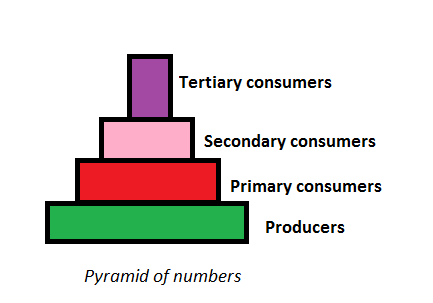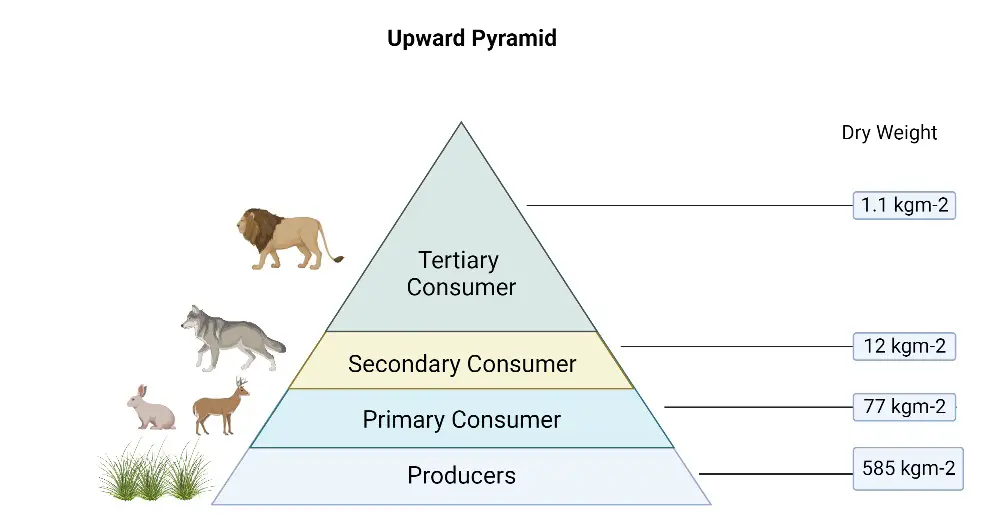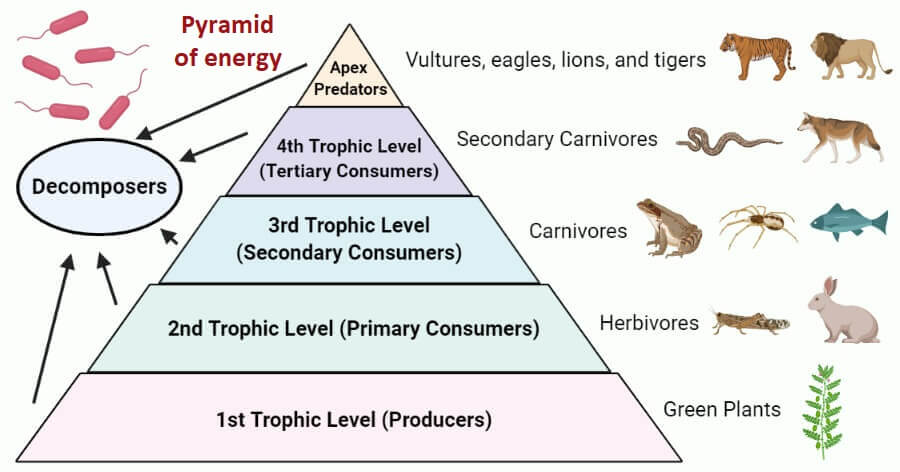Ecological pyramid
Ecological pyramid is a graphical representation in the form of a pyramid showing the feeding relationship of groups of organisms. It is often represented in a way that the producers are at the bottom level and then proceeds through the various trophic levels in which the highest is on top. Three types of pyramidal relations may be found among the organism at different levels in the ecosystem: pyramid of number, pyramid of biomass and pyramid of energy.
a. Pyramid of number: It depicts the number of individual organisms at different trophic levels of food chain. This pyramid was advanced by Charles Elton (1927), who pointed out the great difference in the number of the organisms involved in each step of the food chain.

b. The pyramid of biomass: A biomass pyramid is a diagram that compares the biomass of different trophic levels within an ecosystem. It shows the mass of producers that are needed to support primary consumers, the mass of primary consumers required to support secondary consumers, and so on.

c. The pyramid of energy : An energy pyramid is a model that shows the flow of energy from one trophic level to the next along a food chain. The pyramid base contains producers—organisms that make their own food from inorganic substances. Thus, the higher the trophic level on the pyramid, the lower the amount of available energy.
